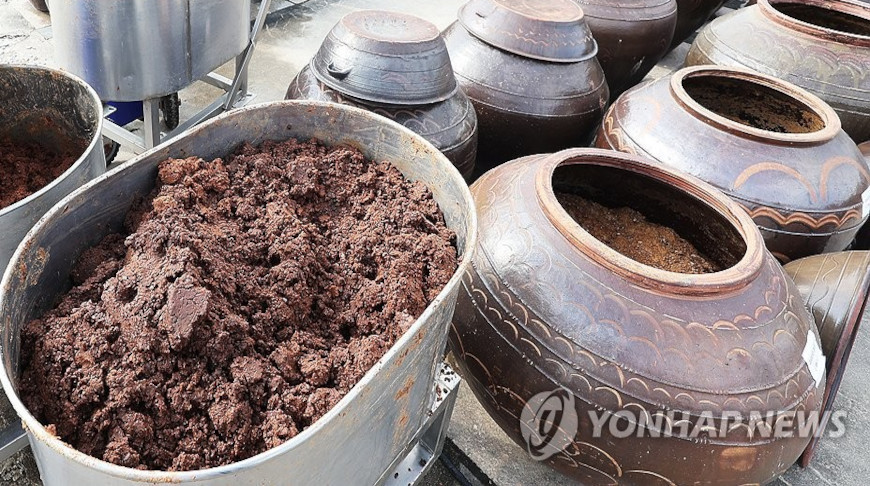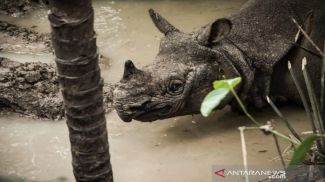
SEOUL, 6 December (BelTA - Yonhap) - Korea's tradition of making
fermented sauces using soybeans has been added to UNESCO's intangible
cultural heritage list.
The decision to inscribe "Knowledge, beliefs and practices related to jang making" was announced during the 19th session of the Intergovernmental Committee for UNESCO Intangible Cultural Heritage, currently underway in Asuncion, Paraguay, from Dec. 2-7.
The recognition, widely anticipated following a recommendation from the committee's deliberative body last month, honors the rich cultural practice of creating traditional fermented soybean-based condiments known as "jang."
"The communal act of jang-making generates a sense of peace and belonging for the communities concerned," the committee said.
As one of Korea's long-standing food traditions passed down through generations, jang-making encompasses not only the sauces themselves but also the entire process, from ingredient preparation to the final product.
Since the Three Kingdoms period (57 B.C.-A.D. 668), Koreans have been known to make jang. During the Joseon Dynasty (1391-1910), the practice was so highly valued that royal storerooms were established specifically for jang storage, managed by court ladies.
This culinary tradition includes several varieties, such as "doenjang" (soybean paste), "ganjang" (soy sauce) and "gochujang" (red pepper paste).
What distinguishes Korean jang from similar fermented soybean products in Asia is its unique methodology, such as creating both doenjang and ganjang from the same "meju" (fermented soybean blocks) and adding new jang to leftover soy sauce from the previous years.
UNESCO recognized jang culture as a fundamental pillar of Korean culinary heritage, alongside kimchi, and highlighted how each household preserves its own unique jang-making methods, reflecting generations of family history and tradition.
First designated as a national intangible heritage in 2018, jang-making now joins 22 other Korean cultural practices on the UNESCO list, which include ancestral royal rites, the percussion instrument performance known as "pansori" and the 5,000-year-old dance "ganggangsullae."
The decision to inscribe "Knowledge, beliefs and practices related to jang making" was announced during the 19th session of the Intergovernmental Committee for UNESCO Intangible Cultural Heritage, currently underway in Asuncion, Paraguay, from Dec. 2-7.
The recognition, widely anticipated following a recommendation from the committee's deliberative body last month, honors the rich cultural practice of creating traditional fermented soybean-based condiments known as "jang."
"The communal act of jang-making generates a sense of peace and belonging for the communities concerned," the committee said.
As one of Korea's long-standing food traditions passed down through generations, jang-making encompasses not only the sauces themselves but also the entire process, from ingredient preparation to the final product.
Since the Three Kingdoms period (57 B.C.-A.D. 668), Koreans have been known to make jang. During the Joseon Dynasty (1391-1910), the practice was so highly valued that royal storerooms were established specifically for jang storage, managed by court ladies.
This culinary tradition includes several varieties, such as "doenjang" (soybean paste), "ganjang" (soy sauce) and "gochujang" (red pepper paste).
What distinguishes Korean jang from similar fermented soybean products in Asia is its unique methodology, such as creating both doenjang and ganjang from the same "meju" (fermented soybean blocks) and adding new jang to leftover soy sauce from the previous years.
UNESCO recognized jang culture as a fundamental pillar of Korean culinary heritage, alongside kimchi, and highlighted how each household preserves its own unique jang-making methods, reflecting generations of family history and tradition.
First designated as a national intangible heritage in 2018, jang-making now joins 22 other Korean cultural practices on the UNESCO list, which include ancestral royal rites, the percussion instrument performance known as "pansori" and the 5,000-year-old dance "ganggangsullae."













